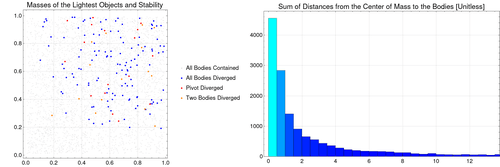Alumni

Pedro Cabral
Bio
Pedro Cabral is a Brazillian High School student. Since 2016, Pedro attended national olympiads and rocket contests, and his effort gave him the title of finalist and medalist at the 2017 Brazillian Programming Olympiad. In 2018, Pedro started his journey into teaching data science and astrophysics research in the Laboratory of Astrophysics and Cosmology of the Federal Institute of Ceará. His passion for mathematics and technology also lead him to give lectures in the Laboratory of Robotics of the Federal Institute of Ceará. Pedro is a co-author of two scientific articles and has helped with two master's articles. As a Wikipedia contributor, he has a diverse spectrum of interests in many areas, ranging from aerodynamics and artificial intelligence to abnormal psychology and philosophy.
Project: Patterns in n-Body Simulations: Statistical Analysis of the Three Body Problem

Goal
In this project, I analyze n-body simulations outputs and their patterns by utilizing different statistical methods, visualization algorithms and feature extraction techniques. Using an n-body simulation random generation technique, a sample of 5000 different outputs could be generated. By performing feature extraction processes, some interesting visualizations about the different outcomes from the simulations were plotted on a two-dimensional feature space plot. Additional conclusions were made using the distribution of the center of mass and a two-body mass visualization.
Summary of Results
In this project, I conclude that the applicability of algorithms such as neural networks and clustering classification is hard due to the chaotic nature of the n-body simulations; the volatility of such systems do not allow such a thing as classification. Some inference could be achieved in the graphics and distributions, such as stability in lower masses, and the close center of mass from the systems.
Future Work
An interesting expansion to research is to produce the same analysis on larger systems, such as a five-body problem. In a more robust computer, more simulations can be done and clearer correlations and curves should be likely to conceive.